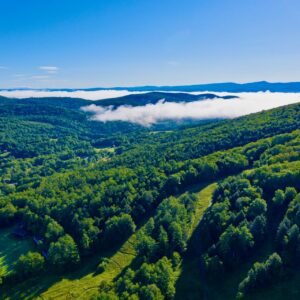Ascutney Outdoors believes in conservation and connecting people with their land.
 The West Windsor Town Forest consists of 1,582 acres of conserved land and is one of the largest blocks of non-fragmented land in the southern Connecticut Valley region. Together with the adjacent Ascutney State Park and several privately conserved parcels, these connections provide a significant wildlife habitat corridor north to south and east to west.
The West Windsor Town Forest consists of 1,582 acres of conserved land and is one of the largest blocks of non-fragmented land in the southern Connecticut Valley region. Together with the adjacent Ascutney State Park and several privately conserved parcels, these connections provide a significant wildlife habitat corridor north to south and east to west.
The expanded Town Forest was permanently conserved in 2015, thereby ensuring protection of this parcel this natural resource, as well as the extensive trail system and recreational assets, a defining feature of West Windsor’s history and economy. The Upper Valley Land Trust is a co-holder of the conservation easement and has worked closely with the community to develop an unprecedented easement to secure both conservation and recreational access.
Mount Ascutney as a whole, and the Town Forest land, specifically, contain many State-significant and uncommon natural communities and wildlife habitats, and is a hotspot for ecological biodiversity. Vermont Natural Heritage Program considers Mount Ascutney as the best example of elevation-dependent natural community variation in the State, and among the best in all New England. The area provides significant wildlife habitat connectivity that is critical to sustaining the diverse and unique wildlife population Vermont.
The parcel’s ecological importance serves as an outdoor classroom and laboratory for lessons on ecology or tracking climate change impacts but is available to all who visit whether to recreate in a natural landscape or simply take in its natural beauty.